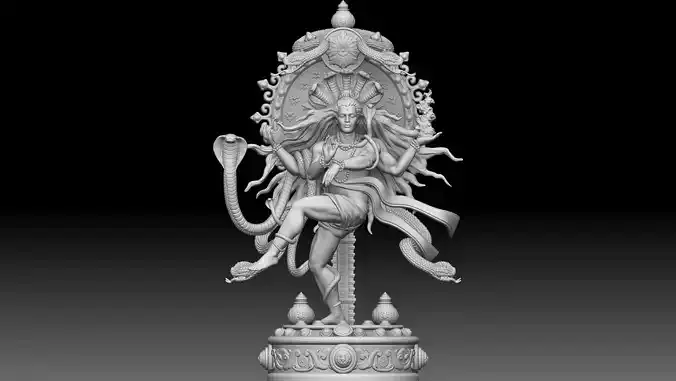1/7
3D Print modelFree Size Easy To Print
About Shiva Natraja :-
Shiva Nataraja, meaning Lord of the Dance, is a depiction of the Hindu god Shiva in his cosmic dance form, symbolizing creation, preservation, and destruction, and is a prominent icon in Indian art and culture.
Key Aspects of Shiva Nataraja:Cosmic Dance:Nataraja's dance, also known as the Tandava, represents the cyclical nature of the universe, with Shiva as the source of all movement and energy. Symbolism:Flaming Halo: The ring of fire surrounding Nataraja symbolizes the cosmos and the continuous cycle of creation and destruction. Damaru (Hand Drum): Held in his upper right hand, the damaru represents the rhythmic sound of creation. Agni (Fire): Held in his upper left hand, agni represents the destructive energy that cleanses and prepares for new creation. Abhaya Mudra (Fear-Not Gesture): The lower right hand in the abhaya mudra signifies protection and the absence of fear. Gajahasta Mudra: The front left hand, pointing down to the raised left foot, signifies release from ignorance. Trampling Apasmara: Nataraja is shown standing on the demon Apasmara, representing ignorance and illusion, which is being overcome. Significance:Nataraja is revered as the ultimate symbol of cosmic energy and the triumph of the spiritual over the material. Cultural Relevance:Nataraja is a prominent figure in Indian culture, art, and religion, and his image is often seen in temples and art. Chola Period:The iconic form of Nataraja evolved under the rule of the Cholas, a dynasty in South India. Other Dances of Shiva:Besides Nataraja, Shiva is also depicted in other dance forms, such as the wild tandava and the graceful lasya. Nataraja Temple:The Chidambaram temple in Tamil Nadu, India, is dedicated to Nataraja and is an important Shaiva (Shiva-worshipping) center.
REVIEWS & COMMENTS
accuracy, and usability.







